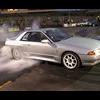Weird Engine Light Flashing With Power Fc
Announcements
-
Similar Content
-
Latest Posts
-
Because the drive dog for the steeering angle sensor is present on wheels that came in HICAS cars and not present on wheels that came on non-HICAS cars. Not that I would let that bother me, because HICAS is trash and any excuse to get rid of it is a good excuse.
-
My plan is to replace both Shift Solenoids A and B, and good idea on the Torque Convertor Solenoid as well.
-
I mean, I am always taking donations for a newer model!! If you'd like to sponsor me. I would gladly get something else!! LOL
-
Interesting. Great info. thank you. Give a few days to get that name plate. I have a busy life most weeks. I will be in touch.
-
By Murray_Calavera · Posted
Strange your posting about this being an issue. Move the harness or change your wheels or run more camber etc. Have the thing not touch the thing so it doesn't destroy the thing. Short answer, no. Slightly longer answer, the factory fuel gauge is measuring resistance. You need to wire in the FPG fuel level sender into the original factory fuel level sender wiring. I drew you a picture to explain this one The factory strainer is quite long, reaching down into the bottom of the tank. Safe bet your aftermarket fuel pump has a little baby sized strainer that probably doesn't even point down towards the bottom of the thank. Solution, move the pump lower down in the tank, or fit a longer strainer, or do both. I did both, I've run my tank down to 5L remaining and the car still drove fine.
-




Recommended Posts
Create an account or sign in to comment
You need to be a member in order to leave a comment
Create an account
Sign up for a new account in our community. It's easy!
Register a new accountSign in
Already have an account? Sign in here.
Sign In Now